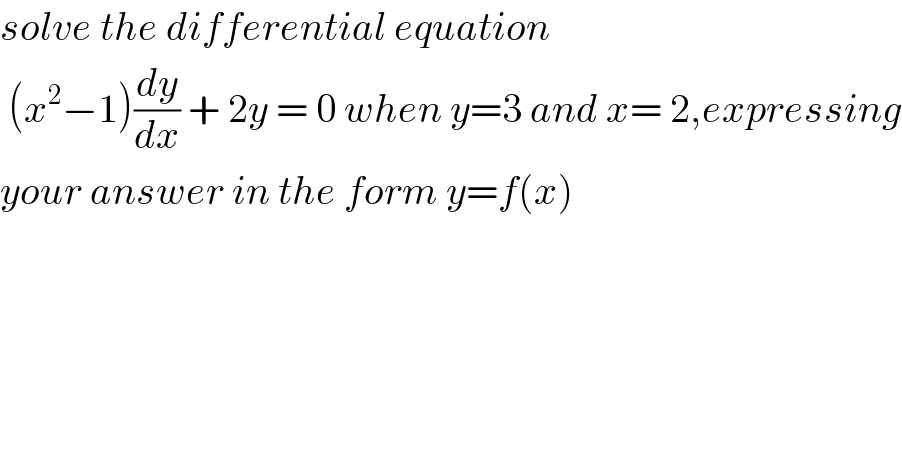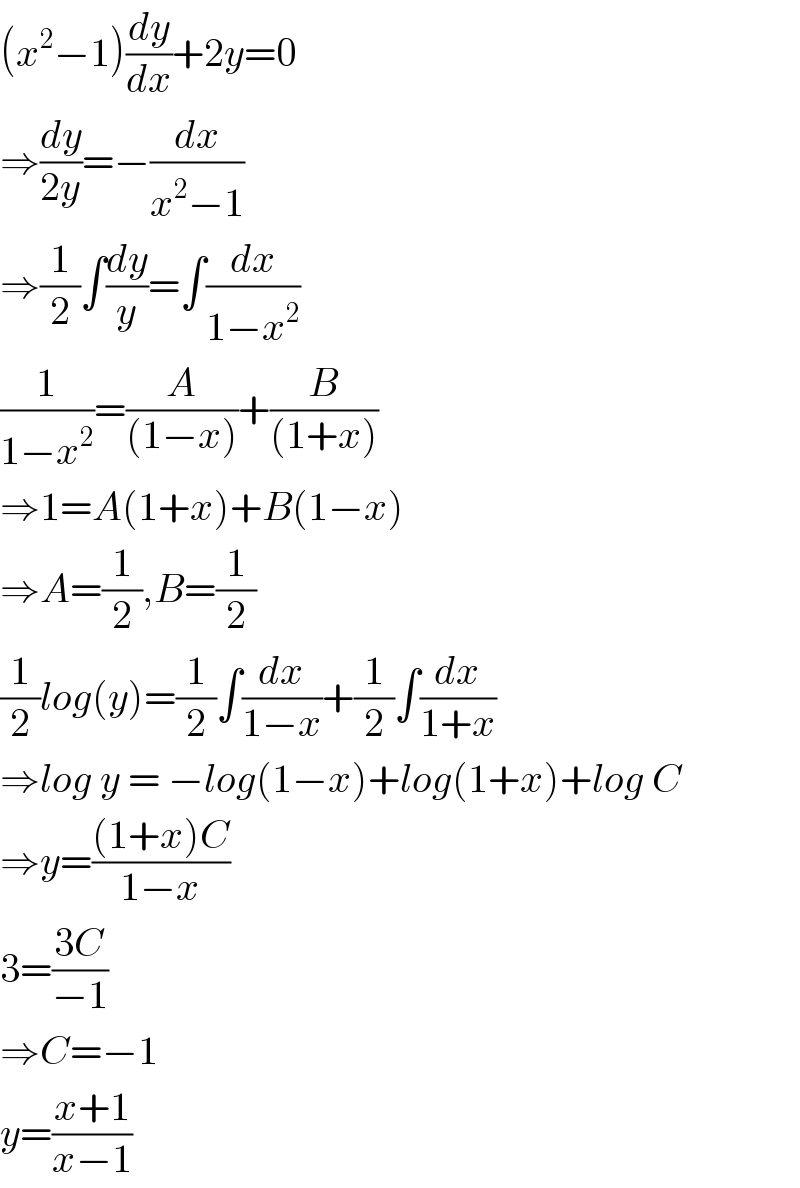
Question and Answers Forum
Previous in Differential Equation Next in Differential Equation
Question Number 75175 by Rio Michael last updated on 08/Dec/19

Answered by Kunal12588 last updated on 08/Dec/19

Commented by Rio Michael last updated on 08/Dec/19

